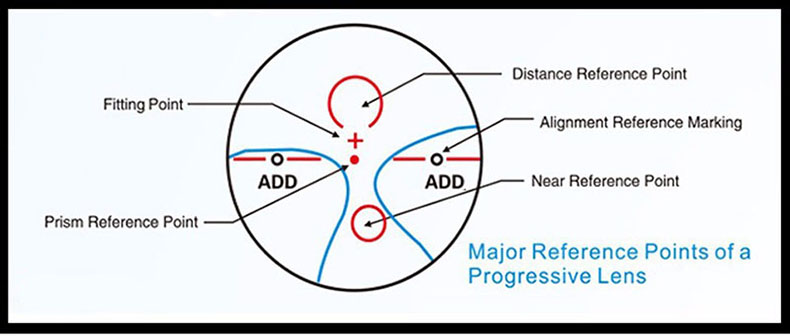
Eyeglasses come in a variety of types. This includes a single-vision lens with one power or strength over the entire lens, or a bifocal or trifocal lens with multiple strengths over the entire lens.
But while the latter two are options if you need a different strength in your lenses to see far and near objects, many multifocal lenses are designed with a visible line separating the different prescription areas.
If you prefer a no-line multifocal lens for yourself or your child, a progressive additional lens might be an option.
Modern progressive lenses, on the other hand, have a smooth and consistent gradient between differing lens powers. In this sense, they can also be called “multifocal” or “varifocal” lenses, because they offer all of the advantages of the old bi- or trifocal lenses without the inconveniences and cosmetic drawbacks.

Benefits of Progressive Lenses
With progressive lenses, you won't need to have more than one pair of glasses with you. You don't need to swap between your reading and regular glasses.
Vision with progressives can seem natural. If you switch from viewing something up close to something far away, you won't get a "jump" like
you would with bifocals or trifocals. So if you're driving, you can look at your dashboard, at the road, or at a sign in the distance with a smooth transition.
They look like regular glasses. In one study, people who wore traditional bifocals were given progressive lenses to try. The study's author said most made the switch for good.
If you value quality, performance and innovation you’ve come to the right place.
Index&Material Available
Who Uses Progressive Lenses?
Almost anyone with a vision problem can wear these lenses, but they're typically needed by people over age 40 who have presbyopia (farsightedness) -- their vision blurs when they're doing closeup work like reading or sewing. Progressive lenses can be used for children, too, to prevent increasing myopia (nearsightedness).

Tips for Adjusting to Progressive Lenses
If you decide to try them, use these tips:
Choose a quality optical shop that can guide you through the process, help you pick a good frame, and make sure the lenses are perfectly centered over your eyes. Poorly fitted progressives are a common reason why people can't adapt to them.
Give yourself one or two weeks to adjust to them. Some people may need as long as a month.
Make sure you understand your eye doctor's instructions on how to use them.
Wear your new lenses as often as possible and stop wearing your other glasses. It will make the adjustment quicker.

 Material
Material Refractive Index
Refractive Index Abbe Value
Abbe Value Specific Gravity
Specific Gravity UV Block
UV Block Design
Design